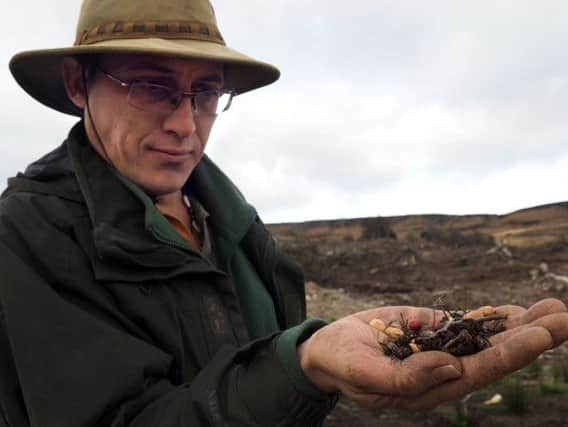Restoring Burbage to its natural glory


Ziggy and colleague Angus Hunter from Sheffield Council’s biodiversity unit were clambering through bogs and decaying pine trees with some excitement. Birch and rowan saplings sprouting up everywhere, they noted, meadow pipits, maybe a raven wheeling over, rare flowers reappearing from seed dormant in the soil, frog spawn, water vole droppings and glowing moss.
“It’s absolutely beautiful,” said Jane Houldcroft. “It’s lush and green and so starry looking. I love sphagnum moss.”
Advertisement
Hide AdAdvertisement
Hide Ad

For Sheffielders of a certain age, the mini nordic pine forest visible from the road to Hathersage above Fiddler’s Elbow had grown since the 1970s into a notable but weird landscape. Those with good imaginations could work out that the trees had been planted to mark the shape of the British Isles.
But after a felling programme a year ago, all that now remains is the Scottish highlands, Northumbria, and a few patches of Gloucestershire, Cumbria and the east coast.
“In my view, that conifer plantation should never have been planted,” said Angus Hunter. “So we’re now restoring the ecology to what it would be naturally.”
After a long pre-history marked by burial sites and the Carl Wark ceremonial hill fort, Burbage Valley was criss-crossed by medieval packhorse routes, and used for quarrying and iron smelting.
Advertisement
Hide AdAdvertisement
Hide Ad

In the 19th century the Duke of Rutland picked it up after the Enclosure Acts as an aristocratic outdoor recreation facility for carriage drives and grouse shooting. Sheffield Council took over the valley in the 1920s to make a reservoir, but the geology turned out to be inappropriate and in the 1940s, Burbage became an army training ground (several larger boulders still carry the bullet holes). The 1970s plantation turned out to be the wrong trees in the wrong place: lodgepole pine, Japanese larch and a few Scots pine, left to grow with no thinning, resulting in poor quality timber, prone to falling down and fires.
The lodgepole pine likes fire to spread its seed, and matured just in time for the arrival of the outdoor party seasons of the 1990s.
The various organisations who now own and manage the land (the National Trust and the council in particular) won a Nature Improvement Areas grant to restore the natural landscape, and this month Burbage users have been helping replant the valley with native alder, birch, oak and willow.
“I was really upset about the clearances initially,” said runner Natalya Kennedy.
Advertisement
Hide AdAdvertisement
Hide Ad

“But I realised it has been carefully thought out, and if we’re patient it’s going to be and look better than before.”
Tree planter Allen Williams said: “I’ve been climbing and running in Burbage for years, and never spent a penny to come here, so today I’m giving something back.”
Jane Houldcroft said planting native trees will help reduce flooding and encourage carbon capture. “It’s such a beautiful landscape and it may look a bit ravaged at the moment, but once you’re down close, you can see everything coming up.”
Ziggy said wildlife has been quick to move back into the familiar heathland: moss, pondweed and the nationally rare bog beacon fungus are now reclaiming the streams and ditches open to the sun, along with lizards and snakes, and water voles near the brook.
Advertisement
Hide AdAdvertisement
Hide Ad

There are several types of owl in the valley along with smaller heathland birds, and Ziggy is especially excited by the return of the Burbage nightjars, a strange nocturnal migrant which particularly likes the moths and stumps of felled conifer plantations. Wildlife watchers welcome, said Angus, but do keep your dogs on short leads and try and keep to paths in the nesting season, he stressed.
The felled trees were turned into paper pulp mainly, and a few conifers have been left for coniferous wildlife and as a windbreak for the new saplings. It’s hoped that non-native pines and larches will eventually be removed while some Scots pines will remain.
“It’s a work in progress,” said council woodlands manager Dave Aspinall.
“We hope it will be the restoration of a habitat that was here 1,000 years ago.”
“Eventually, we hope the valley will be more like Padley and less like Sweden,” said Ziggy.